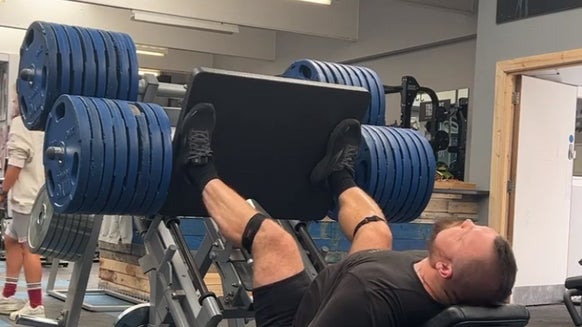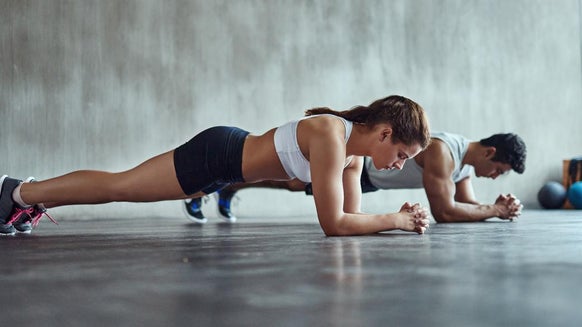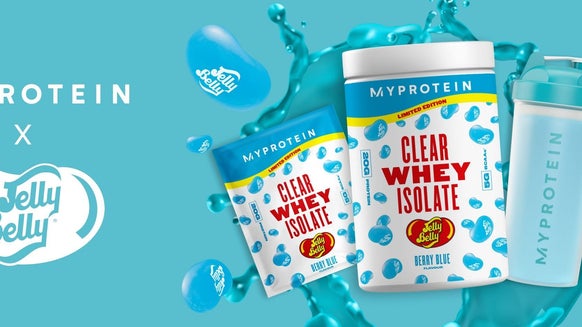Georgina Spenceley | Running & Yoga
Thrusters are one of my top five movements, and with good reason. There are few exercises that hit the whole body in a way that the thruster does.
First you have to clean the bar to the start position, which involves technique work (especially if it’s heavy!), then you have to have sufficient mobility and quality of movement to be able to front squat below parallel while keeping your elbows high, and to top it all off you then have to drive up to standing and push the bar overhead in one, smooth movement. And repeat… over and over.
This move will get your heart pumping and muscles burning like no other!
What Is The Thruster Exercise?
A thruster is a full body exercise that combines a front squat with a press to overhead. In functional fitness, this is usually done with a barbell, like in the benchmark WOD Fran (21-15-9 of thrusters and pullups), but you can also use kettlebells, dumbbells, a sandbag… basically anything you can hold in one or two hands.
In the perfect thruster, you start in the front rack position (this means cleaning the weight up to start with), elbows nice and high and feet at least shoulder-width apart. You then sink down into a squat before propelling yourself up, using the momentum to help you push the bar above your head.
For the movement to count, your hip crease must pass below your knees, and you must finish the movement with the bar pressed out above your head with your knees, hips and elbows straight and your head “through the hole” between your arms – think ears past biceps at a minimum.
Thruster Technique Pointers
#1 Keep your knees out
Another common habit people have with thrusters (and squatting in general) is letting their knees roll inwards. A little bit of a squeeze in with the thighs is ok, but if your knees have a tendency to move inwards from your foot position, especially if this is led by your foot rolling inwards, then this is a sign of weak glutes. Try to focus on pushing your knees out during the movement, keeping them tracking in line with your second and third toes, or outside of that.
Work on: strengthening your glutes (try squatting with a band around your knees) and mobilising your ankles and hips.
#2 Keep your spine neutral
This means maintaining the three main curves of your spine. Your spine curves inwardly at the neck, outwardly at the back of the shoulders/shoulder blades, and then inwardly again at the base of your spine. When you squat, some people have a tendency to round off their lower back, which can load the discs awkwardly. Focus on sending your butt back and down, and only go as low as your mobility allows.
Work on: strengthening your lower back and glutes, and mobilising your thoracic spine (upper back).
#3 Maintain high elbows
Thrusters can place a lot of stress on the wrists, especially when they get heavy, so try to reduce this by keeping your elbows up nice and high. This can be easier said than done, especially for men who tend to have tight shoulders and triceps. It’s all too common to see people doing thrusters with their forearms almost vertical and this is usually a warning sign of mobility issues, either in the shoulders and triceps, or in the squat movement.
Work on: strengthening your upper back and mobilising your shoulders and triceps.
#4 Use the momentum
All too often people don’t take advantage of the momentum from standing up from the squat to help them push the barbell overhead, turning it more into a strict press. As you return from the deep squat try to drive up fast to feel a moment of near-weightlessness in the bar – this is when you should start to push your arms up above your head.
Work on: power out of the bottom of your squat – strengthen your glutes and quads and building a strong hip drive.
Take Home Message
If you want to get a good Fran time (you’re looking at around the 3-minute mark), or are just looking to challenge your strength, flexibility and coordination, then you should definitely spend some time getting this movement right.
Focus on the pointers above and you’ll be smoother and stronger in your thrusters in no time.
Images: Joel McRandal from Raeda








